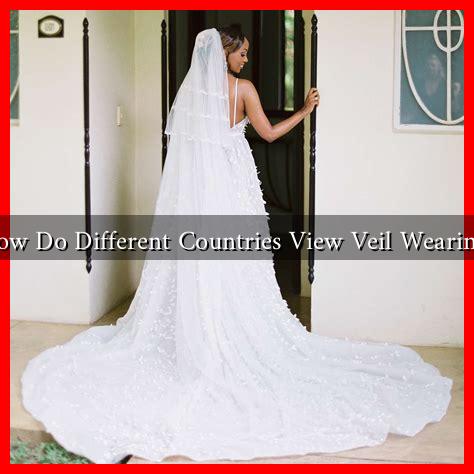-
Table of Contents
- How Do Different Countries View Veil Wearing?
- Understanding the Veil: Cultural and Religious Significance
- Country-Specific Views on Veil Wearing
- 1. France: Secularism and Controversy
- 2. Turkey: A Complex History
- 3. Saudi Arabia: Cultural Norms and Legal Mandates
- 4. United States: A Land of Diversity
- Global Trends and Statistics
- Conclusion: A Reflection of Identity and Freedom
How Do Different Countries View Veil Wearing?
The practice of wearing a veil, particularly among Muslim women, has sparked diverse opinions and policies across the globe. The veil, which can take various forms such as the hijab, niqab, or burqa, is often seen as a symbol of faith, identity, and cultural heritage. However, it also raises questions about women’s rights, freedom of expression, and secularism. This article explores how different countries perceive veil wearing, highlighting cultural, legal, and social dimensions.
Understanding the Veil: Cultural and Religious Significance
For many women, wearing a veil is a personal choice rooted in religious beliefs and cultural practices. The veil can symbolize modesty, piety, and a connection to one’s faith. However, the interpretation of this practice varies significantly across different cultures and regions.
- Islamic Perspective: In many Islamic countries, the veil is seen as an essential part of a woman’s identity. It is often associated with the teachings of the Quran, which emphasizes modesty.
- Western Perspective: In contrast, some Western nations view the veil as a symbol of oppression, leading to debates about women’s rights and autonomy.
Country-Specific Views on Veil Wearing
Different countries have adopted varying stances on veil wearing, influenced by cultural, political, and social factors. Here are some notable examples:
1. France: Secularism and Controversy
France is known for its strict secularism, which has led to significant restrictions on religious symbols in public spaces. In 2004, the French government banned the wearing of conspicuous religious symbols, including the hijab, in public schools. This law was justified as a means to uphold secular values and promote equality.
- In 2010, France further extended this ban to include full-face veils, such as the niqab and burqa, in public spaces.
- The law was met with mixed reactions, with supporters arguing it protects women’s rights, while critics claim it infringes on personal freedoms.
2. Turkey: A Complex History
Turkey presents a unique case where the veil has been both embraced and restricted. Historically, the Turkish Republic adopted a secular stance, leading to bans on headscarves in public institutions. However, in recent years, there has been a shift in policy.
- In 2013, the Turkish government lifted the ban on headscarves in public offices, reflecting a more tolerant approach towards religious expression.
- This change has sparked debates about the balance between secularism and religious freedom in a predominantly Muslim country.
3. Saudi Arabia: Cultural Norms and Legal Mandates
In Saudi Arabia, wearing a veil is not just a cultural norm but a legal requirement. Women are expected to wear an abaya (a loose-fitting cloak) and cover their hair in public.
- The enforcement of this dress code is strict, with religious police monitoring compliance.
- However, recent reforms have begun to challenge these norms, allowing women more freedom in their choice of attire.
4. United States: A Land of Diversity
The United States presents a contrasting view, where the freedom to wear a veil is generally protected under the First Amendment. However, this freedom is not without challenges.
- Muslim women have faced discrimination and prejudice, particularly in the wake of 9/11.
- Despite these challenges, many women proudly wear the hijab as a statement of identity and faith.
Global Trends and Statistics
According to a 2017 Pew Research Center study, the global Muslim population is expected to grow, which may influence the visibility and acceptance of veil wearing. The study found that:
- By 2050, Muslims are projected to make up nearly 30% of the global population.
- In many countries, attitudes towards the veil are shifting, with younger generations more likely to support personal choice in wearing religious attire.
Conclusion: A Reflection of Identity and Freedom
The views on veil wearing are as diverse as the cultures and societies that hold them. While some countries impose restrictions in the name of secularism or women’s rights, others embrace the veil as a symbol of faith and identity. As global demographics shift and cultural dialogues evolve, the conversation around veil wearing will continue to be a complex interplay of personal choice, cultural identity, and societal norms. Understanding these perspectives is crucial in fostering respect and dialogue in an increasingly interconnected world.
For further reading on this topic, you can explore resources from the Pew Research Center and other academic studies that delve into the cultural implications of veil wearing across different societies.

